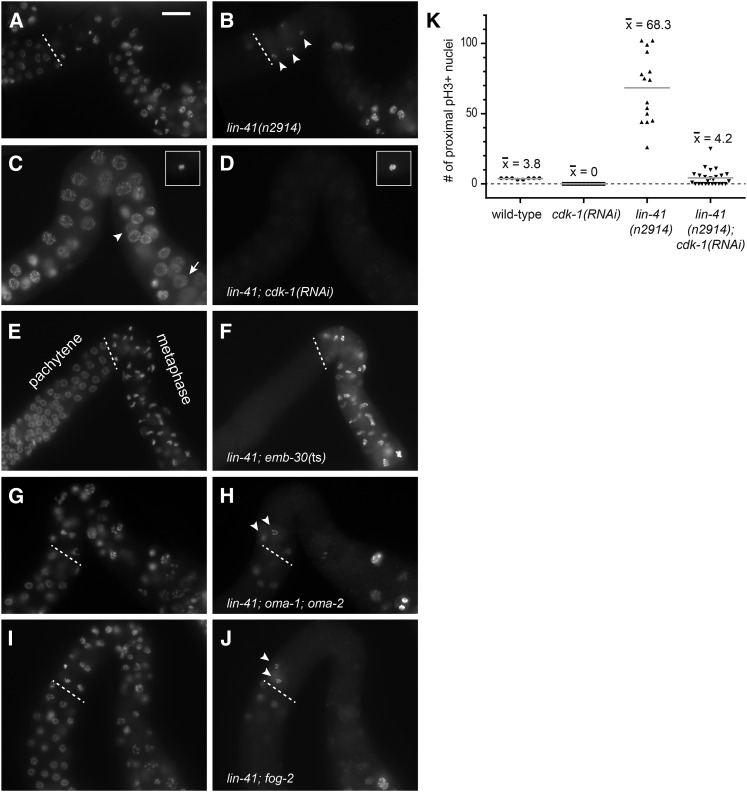Figure 9.
CDK-1 promotes M-phase entry in lin-41 oocytes. (A and B) lin-41 nuclei enter M phase (arrowheads) immediately after pachytene (dashed line); this does not occur in lin-41; cdk-1(RNAi) animals (C and D). Instead, lin-41; cdk-1(RNAi) oocyte nuclei enlarge, but remain in pachytene (arrowhead) until the DNA completely decondenses (arrow). Insets in C and D show an oocyte in M phase in a lin-41 animal treated with control RNAi; this treatment did not suppress the lin-41 phenotype (see K in this figure and Figure S7C). (E and F) Oocytes exit from pachytene and arrest with condensed pH3-positive (F) chromosomes (E) in lin-41; emb-30(ts) animals upshifted to 25°. Although cdk-1 is essential, oma-1 and oma-2, which redundantly promote oocyte meiotic maturation, are not needed for lin-41 oocyte nuclei to enter M phase after pachytene (G and H), and neither is the presence of sperm required (I and J). DNA (A, C, E, G, and I) and pH3 accumulation (B, D, F, H, and J) are shown; the nuclear lamina was also examined to identify oocytes in M phase (not shown). Bar, 20 μm. (K) Post-dauer L4-stage hermaphrodites were fed control or cdk-1 dsRNA-expressing bacteria for 2 days at 22°, and the number of post-pachytene nuclei positive for phospho-histone H3 were counted. Wild-type animals treated with cdk-1(RNAi) made oocytes that failed to accumulate pH3, as previously described (Boxem et al. 1999).

